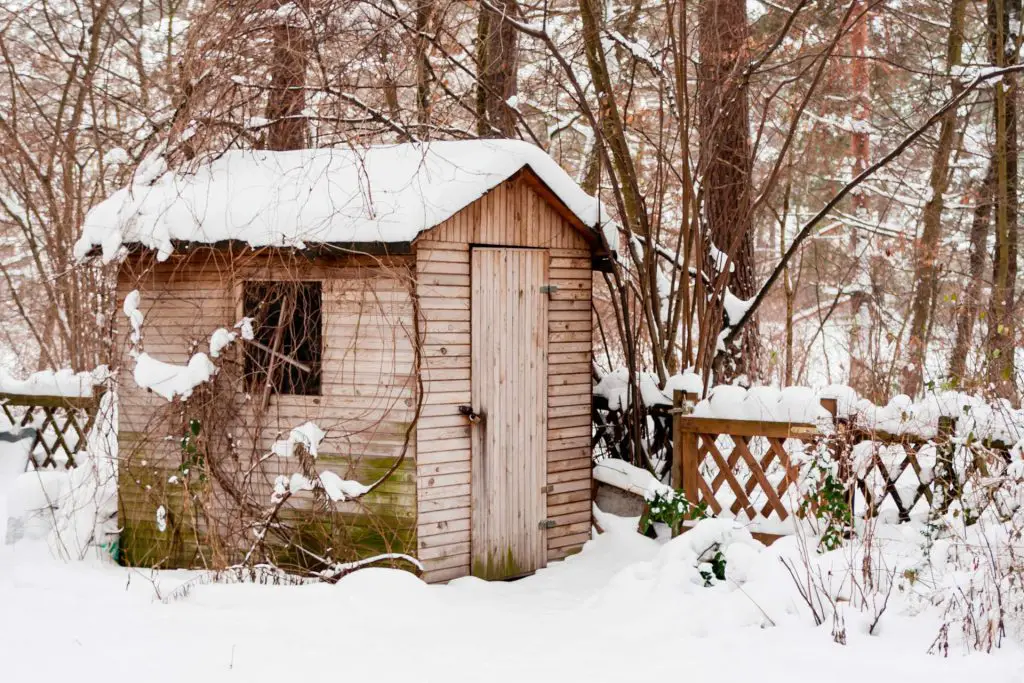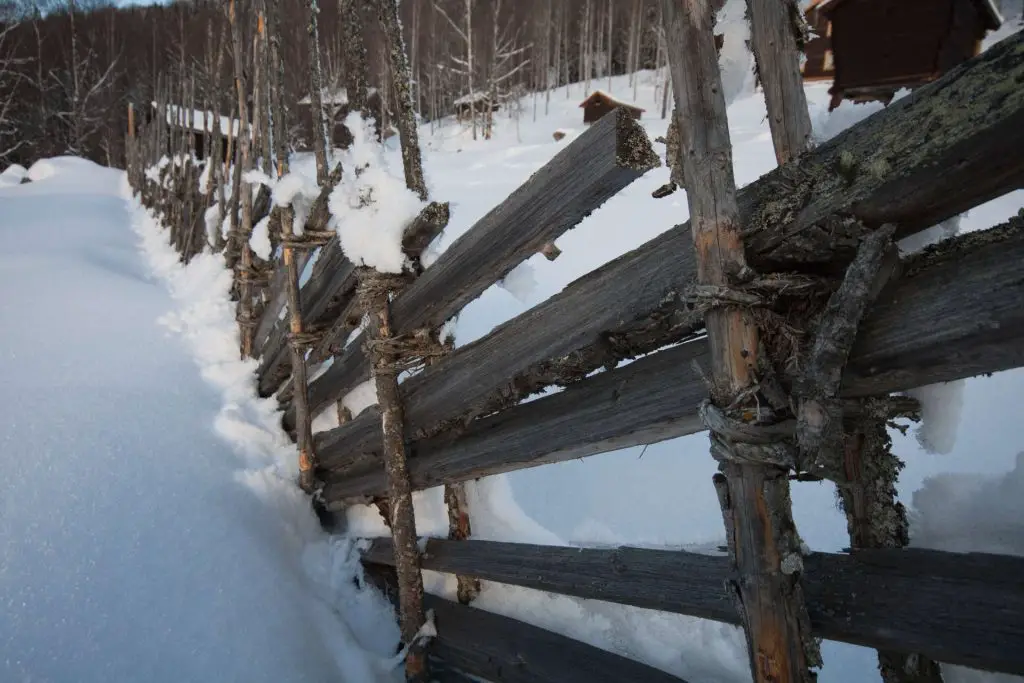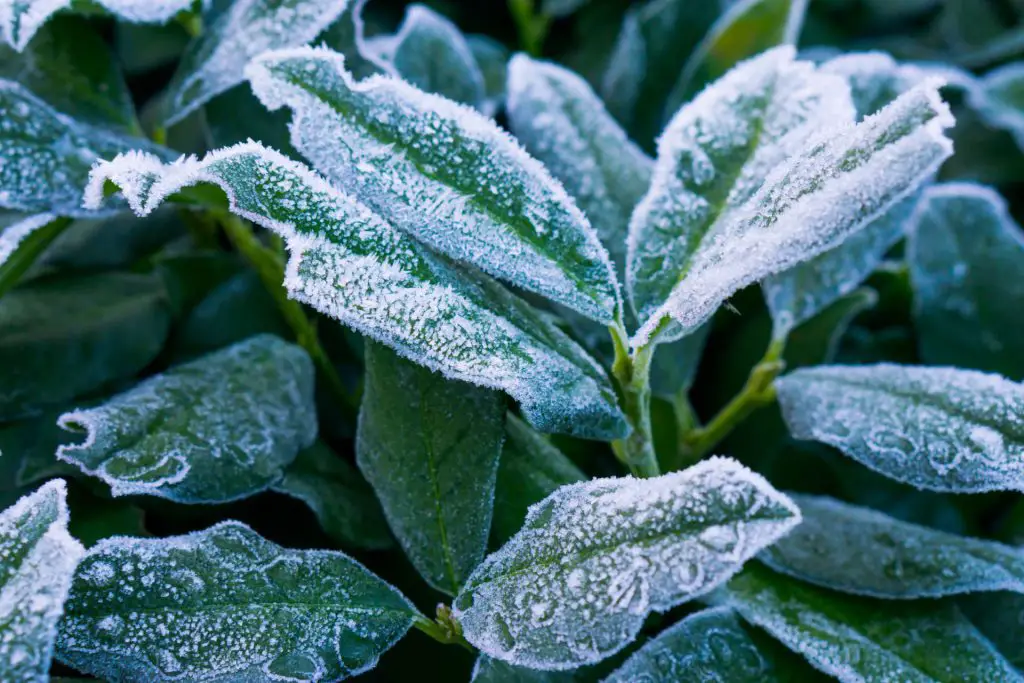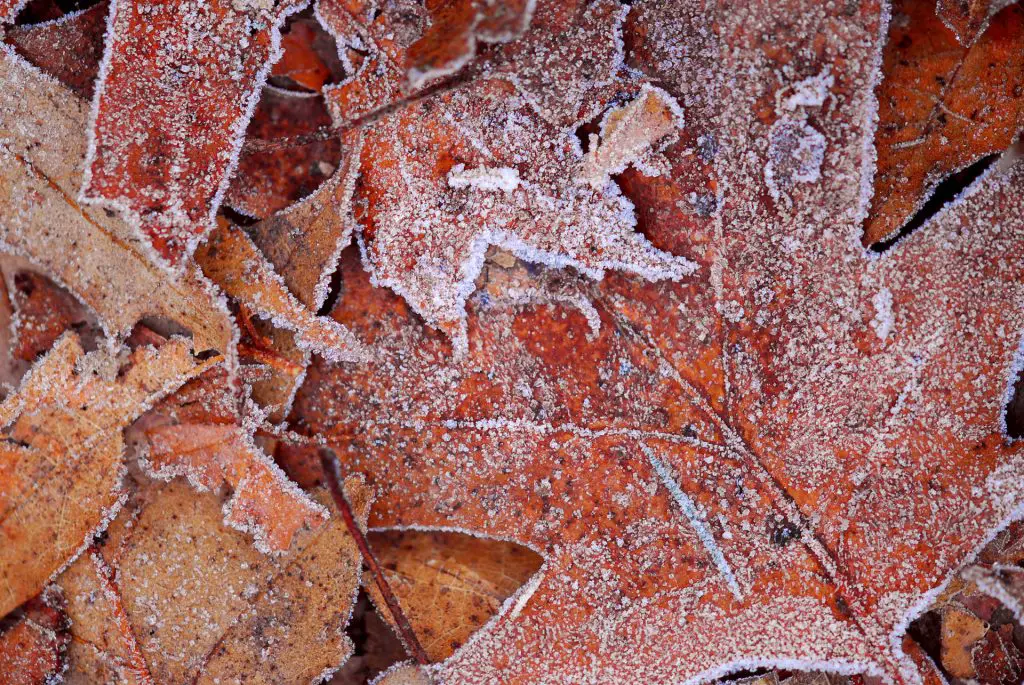Gardening Tasks for December: A To-Do List of Essential Maintenance Tasks
Yes, it is probably cold, and the thought of going out into the garden for prolonged periods doesn’t appeal. The fact is that December is a perfect time, weather permitting, to catch up on a lot of maintenance and preparation jobs that will make gardening in the new season far easier and allow you to get ahead in the gardening calendar.
Below we have provided a table of typical jobs around the garden that need doing and have written an explanation of the benefits:
| Gardening Task | Summary of the Task | Checkbox |
|---|---|---|
| Tidy the garden shed | Maintain a clean and organized garden shed for winter. | [ ] |
| Clean, sharpen, and oil gardening tools | Properly maintain and prepare gardening tools for winter use. | [ ] |
| Check stored summer bulbs for signs of rot | Inspect stored bulbs to prevent rot and maintain quality. | [ ] |
| Harvest winter vegetables and parsnips | Harvest and store winter vegetables for future use. | [ ] |
| Prevent ponds from freezing | Protect ponds from freezing to maintain a healthy ecosystem | [ ] |
| Fix any damaged structures in the garden | Repair and maintain garden structures for durability. | [ ] |
| Clean and tidy paths | Clear garden paths of weeds, algae, and debris. | [ ] |
| Mulch beds with compost or manure | Protect soil and plants by adding mulch to garden beds. | [ ] |
| Plant bare-root trees | Plant trees with exposed roots for cost-effective growth. | [ ] |
| Clear borders | Maintain neat and weed-free garden borders. | [ ] |
| Prepare cold frames | Prepare cold frames to protect seedlings from the cold. | [ ] |
| Plant amaryllis bulbs | Plant amaryllis bulbs for indoor or outdoor blooms. | [ ] |
| Move containers to a sheltered spot | Protect potted plants by moving them to sheltered areas. | [ ] |
| Remove dead leaves from plants | Prevent pests and diseases by removing dead leaves. | [ ] |
| Prune shrubs and trees | Maintain plant health by pruning diseased or damaged branches. | [ ] |
| Dispose of fallen fruit to prevent pests | Keep the garden clean by disposing of fallen fruit. | [ ] |
| Cover soil with mulch to protect it | Prevent soil erosion and maintain soil quality with mulch. | [ ] |
| Check and repair fences | Ensure garden security and privacy with fence maintenance. | [ ] |
| Order seed catalogs | Plan your garden by ordering seed catalogs for inspiration. | [ ] |
| Begin planning for the upcoming gardening season | Plan for a successful next gardening season. | [ ] |
Tidy the garden shed:

Maintaining a clean and organized garden shed is crucial, especially during winter. A tidy shed/storage/workroom provides a warm and orderly place to rest while working in the garden and makes it easier to locate and access the necessary tools and supplies. To tidy the shed, begin by sorting through all the items and discarding anything that is no longer needed or in good condition. Then, thoroughly clean and disinfect any surfaces, shelves, and containers to prevent the accumulation of dirt and pests. Finally, rearrange the remaining items in a practical and visually pleasing manner.
Clean, sharpen, and oil gardening tools:
Proper maintenance of your gardening tools increases their lifespan and makes them more effective and efficient to use. To clean your tools, remove any dirt and debris by scrubbing them with a wire brush or scraping them with a putty knife. Then, rinse them with water and dry them thoroughly. To sharpen cutting edges, use a file or sharpening stone to eliminate any burrs or nicks. Finally, oil the tools to prevent rust and ensure smooth operation. You can use various oils, such as mineral oil or linseed oil, to lubricate the moving parts and protect the metal surfaces.
Check stored summer bulbs for signs of rot:
If you have stored summer bulbs, like dahlias or gladioli, over the winter, regularly check them for signs of rot. Rot can quickly spread through a bulb container and ruin your entire stock. To check for decay, gently remove one or two bulbs from the container and inspect them for any soft or mushy areas. If you find any, remove the affected bulbs and dispose of them. Then, add a layer of fresh soil or compost to the container and return the remaining bulbs. It is also a good idea to occasionally rotate the container to ensure that all bulbs receive equal moisture and light.
Harvest winter vegetables and parsnips:
The winter season is an excellent time to harvest various vegetables, including parsnips, carrots, turnips, and brassicas. These vegetables are at their sweetest and most flavorful after a frost, and they can be stored for several weeks in a cool and dark location.
To harvest parsnips, use a fork to loosen the soil around the plant and gently pull the roots out of the ground. If the roots are too hard to lever out, use a spade to dig them up carefully. When storing parsnips, cut off the tops, brush off any dirt, and wrap them in a newspaper or a damp cloth. They can then be placed in a box or basket in a cool and dry location.
Prevent ponds from freezing:
If you have a pond in your garden, it is essential to prevent it from freezing during the winter months. A frozen pond can be dangerous for both humans and wildlife, and it can also cause damage to the pond liner and pumps. Consider installing a pond heater or aerator to prevent your pond from freezing.
These devices will help to circulate the water and maintain a consistent temperature, even in cold weather. You can also add a floating de-icer, creating an open hole in the ice to allow gases to escape. Finally, make sure to remove and get rid of any fallen leaves or debris from the pond to prevent the water from becoming stagnant.
Fix any damaged garden structures:

It is common for garden structures, such as arbors, trellises, and fences, to become damaged or worn throughout the growing season. If you have any structures needing repair, now is the time to address those projects. Begin by thoroughly inspecting the structures for any loose or broken parts and making a list of the necessary materials for repair. You may need to replace damaged wood, tighten screws or bolts, or reattach loose wires or panels. After you have gathered the required materials, follow the manufacturer’s instructions or use a repair guide to make the necessary repairs.
Clean and tidy garden paths:
During the winter, garden paths can become overgrown with weeds, algae, and moss, making them slippery and difficult to walk on. Remove any weeds, debris, or moss accumulated on the surface to clean and tidy your paths. You can use a hand tool, such as a hoe or rake, to loosen the weeds and a broom or brush to sweep them away. You may also need to apply a herbicide or moss killer to eliminate persistent weeds or moss.
Once the paths are clear, use a garden hose or pressure washer to wash away any remaining dirt or stains. If the paths/tracks are prone to getting muddy, you can add a gravel or mulch layer to improve drainage and reduce erosion.
Mulch beds with compost or manures:
Mulching an area involves covering the soil around plants with a material layer, such as compost, manure, or wood chips. Mulching offers numerous benefits, including protecting the soil from erosion, conserving moisture, and suppressing weeds. First, remove any weeds or debris from the area to mulch your beds. Then, evenly spread a layer of mulch over the soil, being careful not to cover the base of the plants. The depth of the mulch will depend on the type of mulch you are using and the plants you are protecting. Generally, aim for a layer at least 1 to 2 inches deep.
Prepare cold frames:
A cold frame is a simple, portable frame with a lid that protects seedlings and young plants from cold weather. These frames are typically wood, plastic or even metal and have a transparent/clear translucent top that allows sunlight to enter.
To prepare your cold frames for the winter, inspect them for any damage or wear. If the frames are in good condition, clean them thoroughly and add a layer of insulation, such as straw or hay, to the base. If the frames are damaged or worn, consider repairing or replacing them so that they will still be effective when reused next year. Once your cold frames are ready, you can use them to harden off seedlings and protect them from frost, wind, and other adverse weather conditions.
Plant amaryllis bulbs:
Cultivating amaryllis bulbs for a vibrant garden display requires careful attention to key factors. Begin by selecting a healthy bulb, planting it with a third exposed above the soil in well-draining soil mix, and placing it in bright, indirect sunlight. Maintain a balanced watering routine, allowing the soil to slightly dry between watering, and feed with a balanced liquid fertilizer every 2-4 weeks during the growing season.
Keep the temperature consistent, avoiding extreme fluctuations, and provide gentle support for tall flower stalks. By following these expert guidelines, you can enjoy stunning amaryllis blooms that enhance your garden’s beauty year after year.
Move containers to a sheltered location:
If you have any pots or containers in your garden, moving them to a sheltered location during the winter months is a good idea. Pots/ containers are more prone to freezing and thawing than the ground, which can cause them to crack or become damaged. The best way to protect your pots, gather them all in one area and move them to a spot that is sheltered from the wind and rain. You can place them against a wall or under a porch or overhang to provide additional protection. If you have large pots or containers too heavy to move, you can cover them with a tarp or blanket to insulate them from the cold.
Plant bare-root trees:
Bare-root trees, also known as “field-grown” or “bare-root stock,” are sold with their roots exposed rather than potted in soil. Bare-root trees are typically cheaper and easier to plant than container-grown trees, and they have a higher success rate because their roots are not restricted. To plant bare-root trees:
- Select a location that is suitable for the tree’s size and requirements. The site/area should have well-draining soil and receive the appropriate amount of sunlight.
- Prepare the ground by loosening it and adding compost or fertilizers if needed.
- Plant the tree according to the instructions provided by the nursery or supplier.
- Water the tree well after planting to help it establish itself.
Clear garden borders:

Maintaining the borders in your garden is essential for the health and appearance of your plants. Borders/edges can become cluttered and overrun with weeds, debris, and dead foliage, which can suffocate the plants and hinder their growth. To clear the borders:
- Begin by removing any weeds or debris that have accumulated on the surface. You can use a hand tool, such as a hoe or rake, to loosen the weeds and a broom or brush to sweep them away.
- Prune the plants’ dead or damaged branches or stems, and remove any fallen leaves or fruit to prevent pests and diseases.
- Tidy up any borders that have become unruly or overgrown by trimming or thinning the plants.
Order seed catalogs:
If you plan to start seeds indoors or in a greenhouse this winter, you should order seed catalogs and begin planning your garden. Seed catalogs are a valuable source of information and inspiration, and they often offer a wide range of seeds unavailable in local stores. To order seed catalogs:
- Search online for companies that specialize in the types of seeds/bulbs or seedlings you are interested in, or visit the websites of your favorite seed and plant companies.
- Take advantage of the free catalogs that many companies offer or allow you to view them online.
- Once you have received your catalogs, take some time to browse through them and make a list of the seeds you want to order.
Remove dead leaves from plants:

Dead leaves that accumulate on the crowns of plants can hold moisture and create a breeding ground for pests and diseases. To prevent this, it is essential to remove any dead leaves resting on your plants. To do this, grab the leaf by the stem and gently pull it off. If the leaf is attached firmly, you may need to use a pair of scissors or pruners to cut it off. Be sure to dispose of the leaves promptly to prevent them from attracting pests or diseases. If you have a compost bin, you can add the leaves to decompose. If you don’t have a compost bin, you can dispose of the leaves in a garbage bag or a designated area away from your plants.
Pruning diseased or damaged branches from shrubs and trees:
Pruning removes dead, diseased, or damaged branches or stems from shrubs and trees. This vital task helps maintain the health and appearance of your plants, especially during the winter when the plants are dormant. To prune your shrubs and trees, start by closely inspecting the plants for any dead, diseased, or damaged branches or stems that need to be removed.
These branches can often be identified by their color, texture, or shape. Once you have identified the branches that need to be pruned, use a pair of sharp pruning shears or a saw to cut them off at the base. Make clean, smooth cuts to prevent the plant from becoming infected or damaged.
Disposing of fallen fruit to prevent pests:
Fallen fruit can attract pests and diseases to your garden, so it is essential to dispose of it promptly. To dispose of fallen fruit, start by gathering all the fruit that has fallen to the ground. You can use a rake, broom, or bag to collect the fruit. Once you have gathered/picked up or collected the stay fruit in your boarders or on the ground, you have a few options for disposal. If you have a compost bin, you can add the fruit for decomposition. Alternatively, you can dispose of the fruit in a garbage bag. If you have a large amount of fallen fruit, you may need to dispose of it in a designated area away from your plants to prevent pests from returning.
Protect soil from erosion and compacting with mulch:
Mulching involves using a material layer, such as compost, manure, or wood chips, to cover the soil surrounding plants. This process has multiple benefits, including preventing soil erosion, conserving moisture, and controlling weeds.
Select a mulch suitable for your plants and soil type to mulch your soil. Then, remove any weeds or debris from the area and evenly spread the mulch over the soil, not covering the base of the plants. The depth of the mulch should be based on the type of mulch you are using and the plants you are protecting, with a general guideline of at least 2 inches deep.
Maintain fences with regular checks and repairs:
Fences serve several essential functions in a garden, including privacy, security, and marking boundaries. To keep your fences/walls and barriers in good condition, it is necessary to inspect and repair them regularly. Begin by looking for any loose or broken parts, such as boards, posts, or panels, and any signs of rot or damage from weather or pests.
If you identify any issues, create a list of the materials you need to fix them. This may include replacing damaged wood, tightening screws or bolts, or reattaching loose wires or panels. Once you have the necessary materials, follow the manufacturer’s instructions or use a repair guide to complete the repairs.
Prepare for the upcoming gardening season:
December and the following months of January and, to a lesser extent, February provides an excellent opportunity to start planning for the upcoming gardening season as winter approaches. Start by reviewing last year’s garden and noting what was successful and what could be improved upon.
Consider factors such as the types of plants you grew, the location of your beds and containers, and any challenges you faced, such as pests, diseases, or weather. This will help you determine any changes you want to make for the upcoming season. Additionally, assess your soil and compost, making necessary adjustments to ensure your plants have the nutrients they need to thrive. Finally, create a rough plan for your garden, including the types of plants you want to grow and where you will plant them, to help you stay organized and on track as the gardening season approaches.
